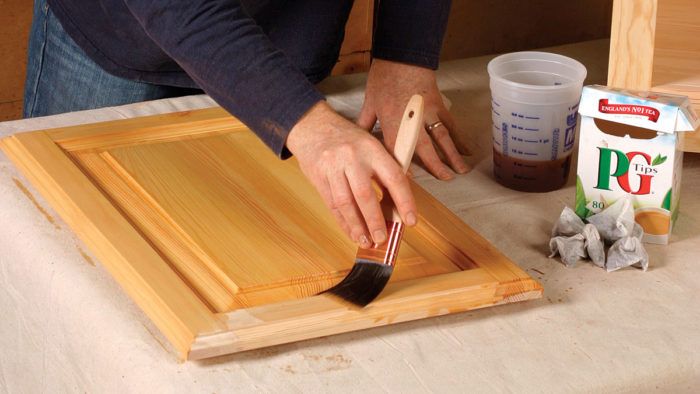
You may have heard of food-safe finishes, but how many finishes are safe as food? My guess is not many. There is one such product lurking in the kitchen. The humble teabag not only revives me after a long day in the shop, but it also serves as an inexpensive, easily available, and environmentally friendly dye.
Tea imparts an attractive warm, golden color that can be built up with additional coats with no loss of clarity. I’ve found that white oak, maple (both regular and tiger), and pine all benefit from this dye. It is particularly useful on pine, a wood prone to blotching, since the weak consistency and finer color particles of the tea stain tend not to collect in the blotch-prone areas.
Brew it, brush it, seal it in
The color and density produced by different brands of tea varies significantly, so do a little experimenting on sample boards first. I have tried different brands and blends (as dyes and drinks), including Lipton, Royal World Indian green tea, Tetley’s British Blend, and PG Tips. While green tea produces too weak a dye, my favorite brew is to combine 12 oz. of hot water and six PG Tips tea bags in a plastic container and allow it to sit overnight.
Sand all the surfaces at P150-grit followed with P220-grit paper. To raise the grain before the application of the water-based dye, wet the surface with distilled water, allow two to four hours of drying time, and then resand with P220-grit paper to remove the whiskers.
Apply the tea using an artificial-bristle brush (the kind recommended for latex paint). Allow the stain to soak in for a few minutes, wipe off any excess with a cotton cloth, and then allow one to two hours of drying time. If a deeper color is required, repeat the application and when dry, lightly sand with P320-grit paper to dull any raised grain.
I like to seal in the dye before applying a topcoat, especially if it is water based, as this can reactivate the dye. Brush on two coats of a dewaxed blond shellac such as SealCoat. Allow the sealer to dry for at least four hours and then sand with P220-grit paper.
If you want the piece to have a subtly darker color, you can tint the clear coat. You can add dye concentrates such as TransTints to many finishes, but if you are using a water-based finish you can continue using tea. Add one part of the tea stain to five parts of finish and stir, but be sure to read the directions on the can, because some water-based finishes have limits as to how much they can be diluted. If you are happy with the color of the piece, simply apply two or three clear coats of your choice, such as more shellac, lacquer, or polyurethane in either solvent or water-based form. Then, if you want a low-luster look, rub the surface with 0000 steel wool and apply a thin coat of paste wax before buffing the surface with a soft cotton cloth.
After all that, you’ll have earned that cup of tea.
Many woods respond
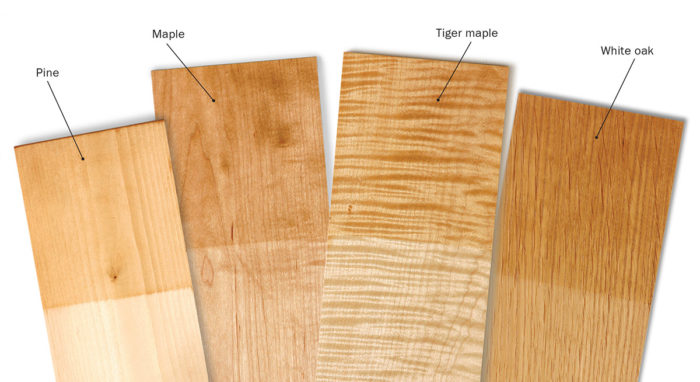
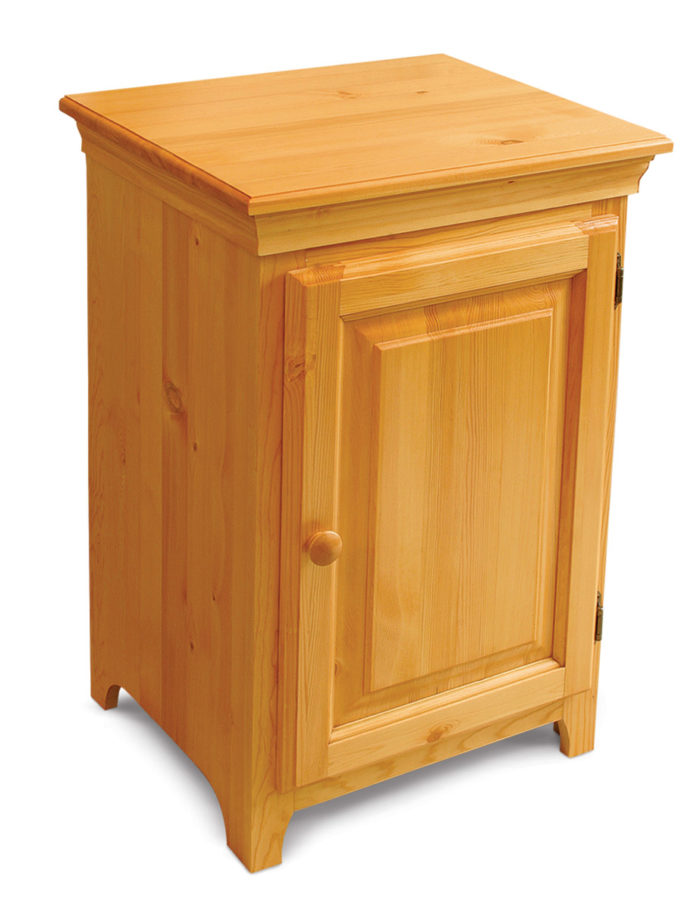
How to use it
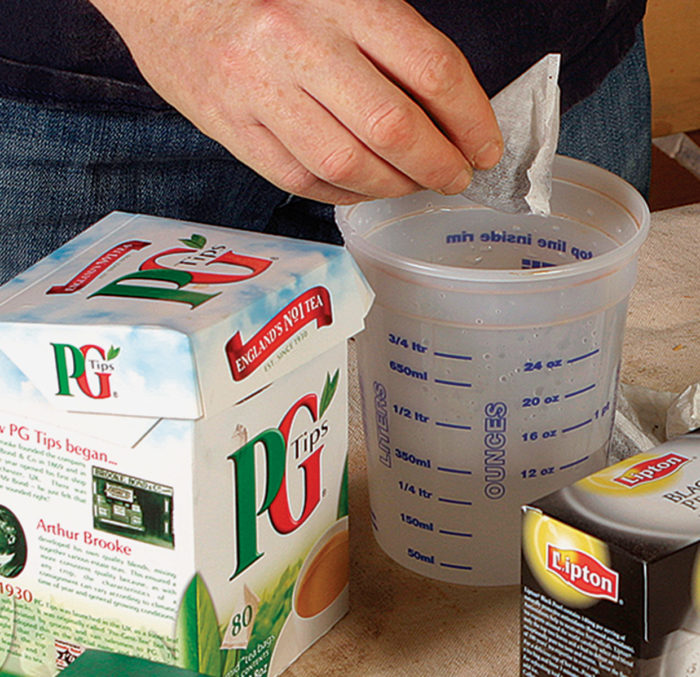

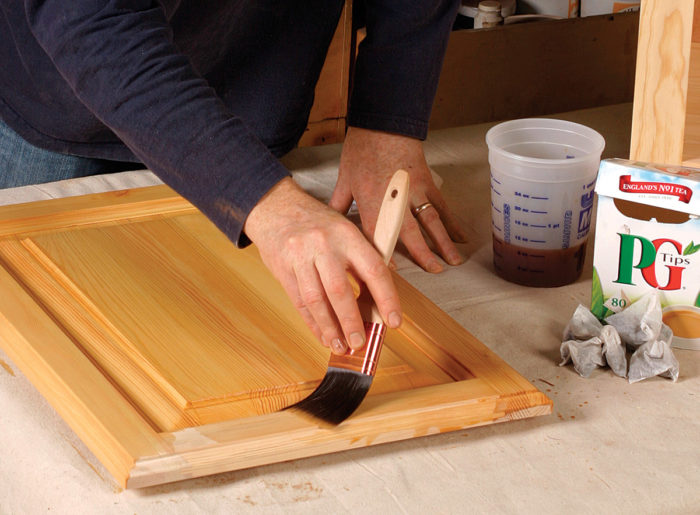
Seal before topcoating
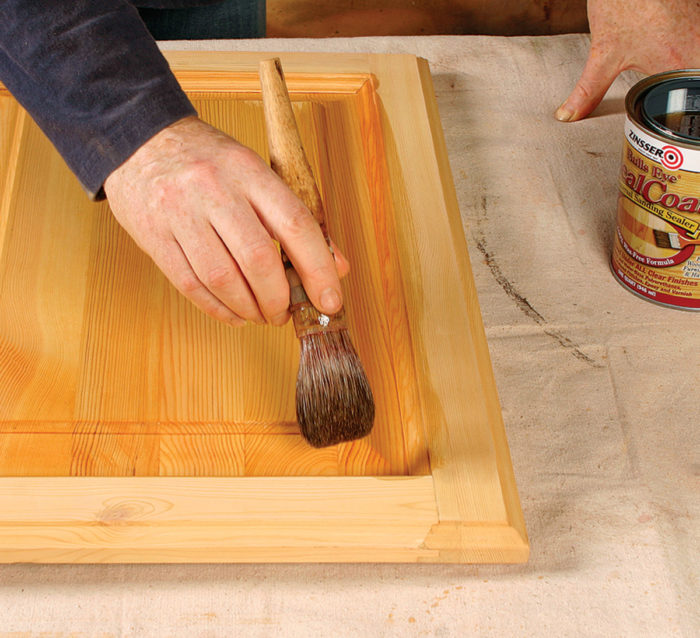
For more color
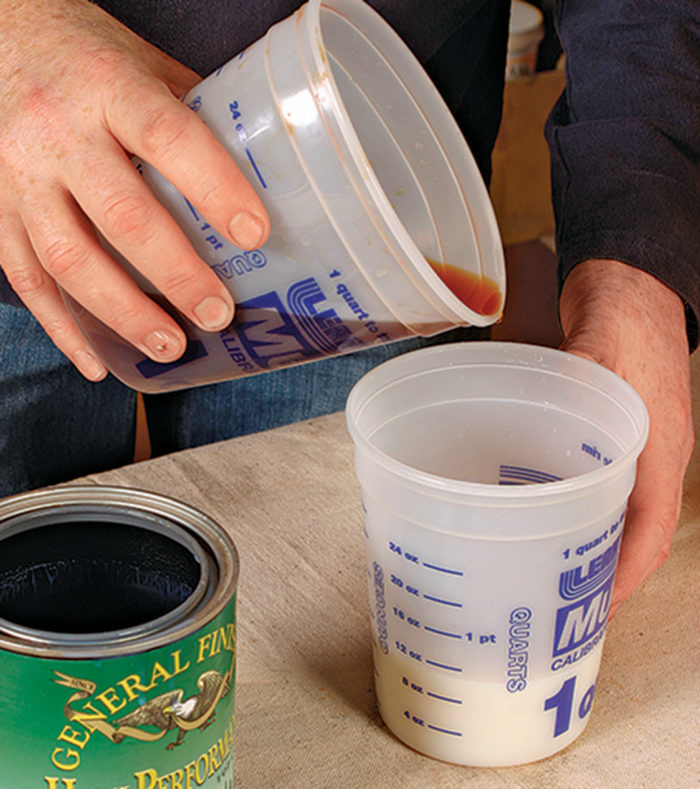
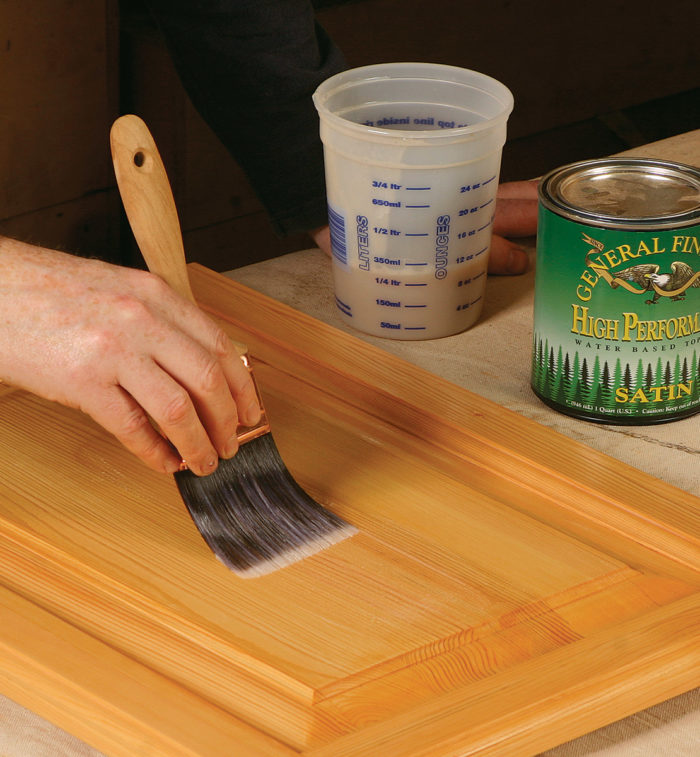
Fine Woodworking Recommended Products

Bumblechutes Bee’Nooba Wax

Bahco 6-Inch Card Scraper

Waterlox Original








Log in or create an account to post a comment.
Sign up Log in